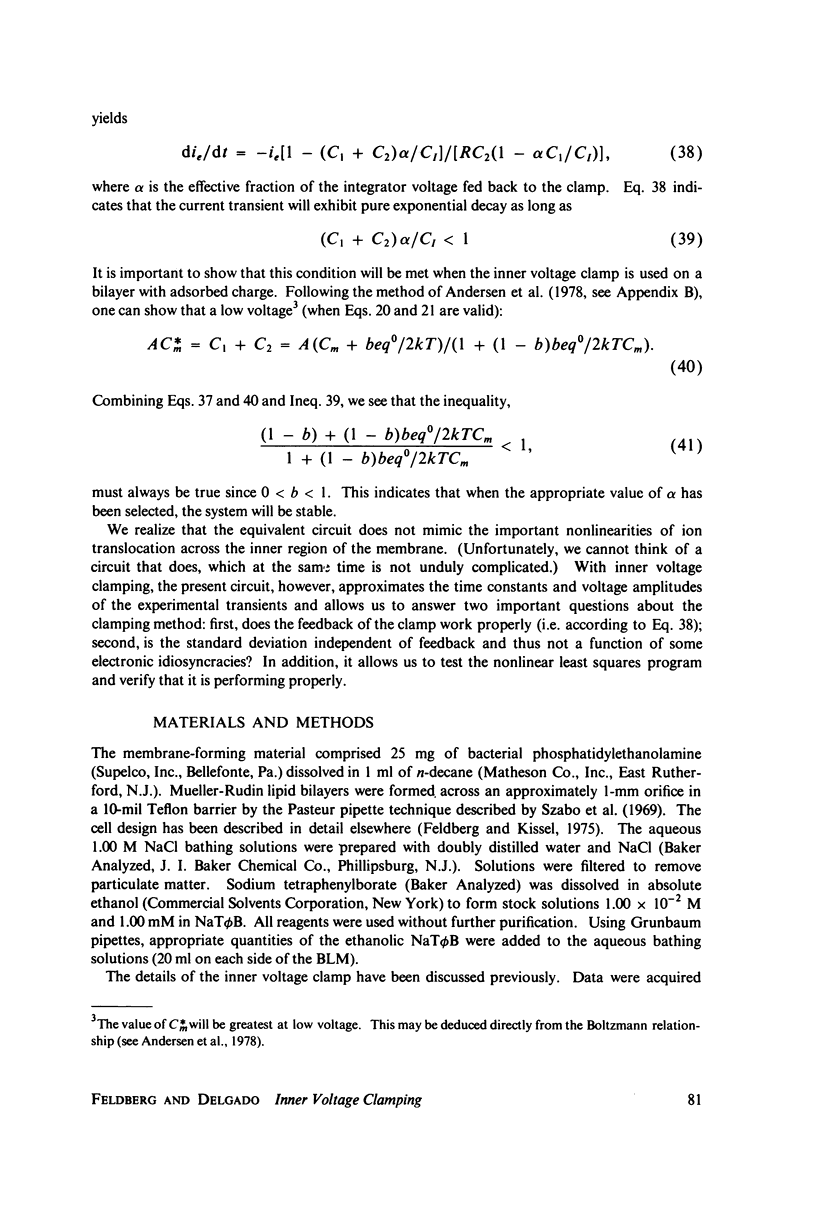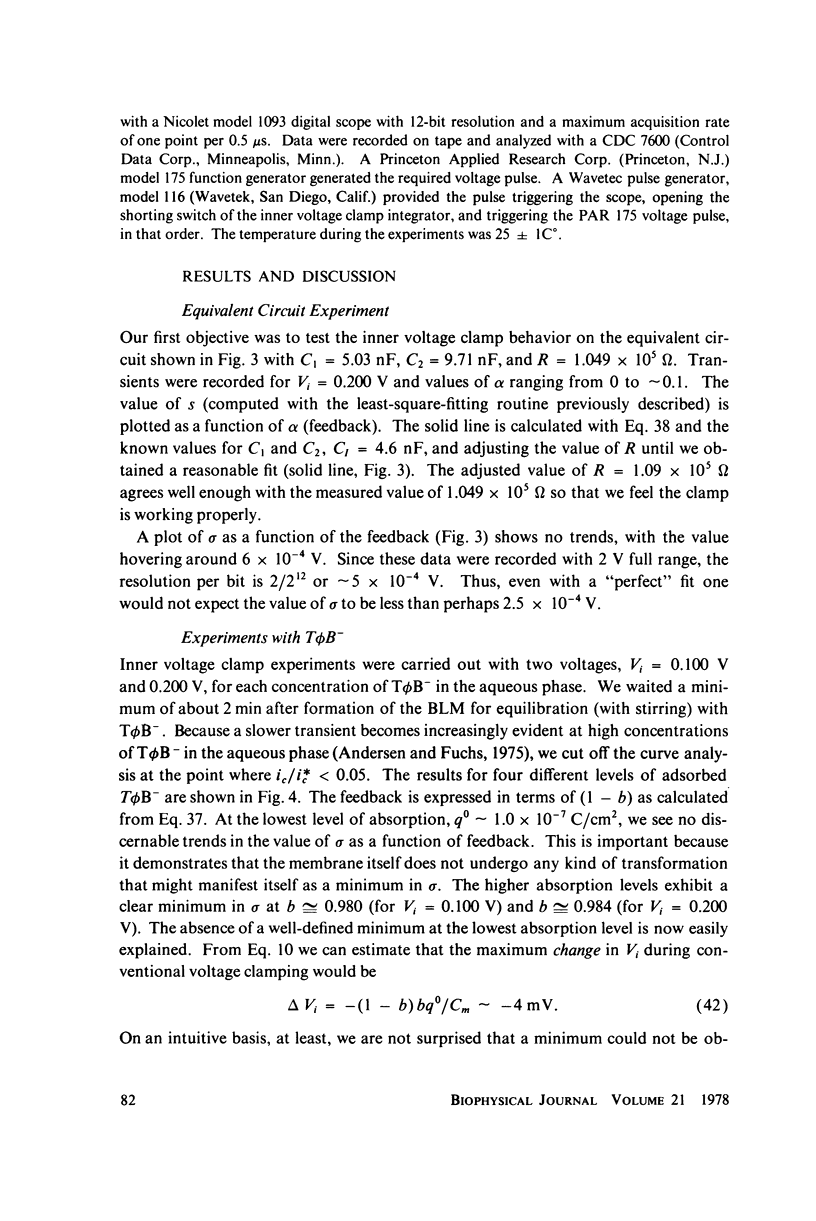Abstract
Ketterer, et al. (1971) have suggested that a combination of electrostatic and chemical interactions may cause hydrophobic ions absorbed within a bilayer lipid membrane to reside in two potential wells, each close to a membrane surface. The resulting two planes of charges would define three regions of membrane dielectric: two identical outer regions each between a plane of absorbed charges and the plane of closest approach of ions in the aqueous phase; and the inner region between the two planes of adsorbed charges. The theory describing charge translocation across the inner region is based on a simple three-capacitor model. A significant theoretical conclusion is that the difference between the voltage across the inner region, Vi, and the voltage across the entire membrane, Vm, is directly proportional to the amount of charge that has flowed in a voltage clamp experiment. We demonstrate that we can construct an “inner voltage clamp” that can maintain, with positive feedback, a constant inner voltage, Vi. The manifestation of proper feedback is that the clamp current (after a voltage step) will exhibit pure (i.e., single time-constant) exponential decay, because the voltage dependent rate constants governing translocation will be independent of time. The “pureness” of the exponential is maximized when the standard deviation of the least-square fit of the appropriate exponential equation to the experimental data is minimized. The concomitant feedback is directly related to the capacitances of the inner and outer membrane regions, Ci and Co.
Experimental results with tetraphenylborate ion adsorbed in bacterial phosphatidylethanolamine/n-decane bilayers indicate Ci ∼ 5 · 10-7F/cm2 and Co ≈ 5 · 10-5F/cm2.
Full text
PDF















Selected References
These references are in PubMed. This may not be the complete list of references from this article.
- Andersen O. S., Feldberg S., Nakadomari H., Levy S., McLaughlin S. Electrostatic interactions among hydrophobic ions in lipid bilayer membranes. Biophys J. 1978 Jan;21(1):35–70. doi: 10.1016/S0006-3495(78)85507-6. [DOI] [PMC free article] [PubMed] [Google Scholar]
- Andersen O. S., Fuchs M. Potential energy barriers to ion transport within lipid bilayers. Studies with tetraphenylborate. Biophys J. 1975 Aug;15(8):795–830. doi: 10.1016/S0006-3495(75)85856-5. [DOI] [PMC free article] [PubMed] [Google Scholar]
- Bruner L. J. The interaction of hydrophobic ions with lipid bilayer membranes. J Membr Biol. 1975;22(2):125–141. doi: 10.1007/BF01868167. [DOI] [PubMed] [Google Scholar]
- Feldberg S. W., Kissel G. Charge pulse studies of transport phenomena in bilayer membranes. I. Steady-state measurements of actin- and valinomycin-mediated transport in glycerol monooleate bilayers. J Membr Biol. 1975;20(3-4):269–300. doi: 10.1007/BF01870639. [DOI] [PubMed] [Google Scholar]
- HODGKIN A. L., HUXLEY A. F., KATZ B. Measurement of current-voltage relations in the membrane of the giant axon of Loligo. J Physiol. 1952 Apr;116(4):424–448. doi: 10.1113/jphysiol.1952.sp004716. [DOI] [PMC free article] [PubMed] [Google Scholar]
- Markin V. S., Grigor'ev P. A., Ermishkin L. N. Priamoe prokhozhdenie ionov cherez lipidnye membrany. I. Matematicheskaia model. Biofizika. 1971 Nov-Dec;16(6):1011–1018. [PubMed] [Google Scholar]


